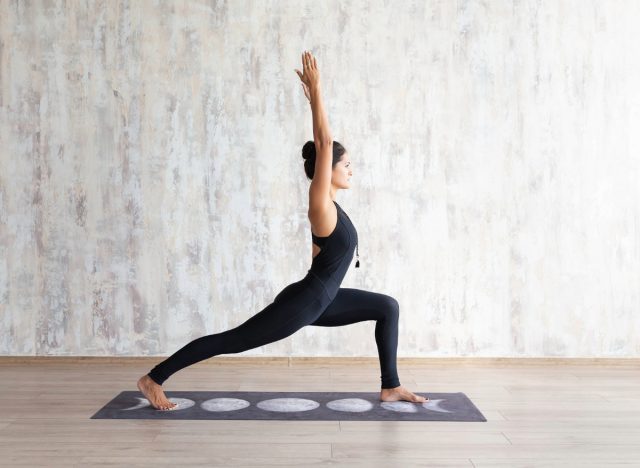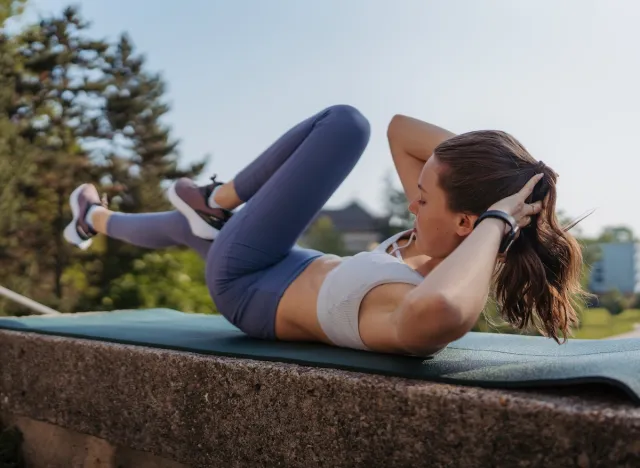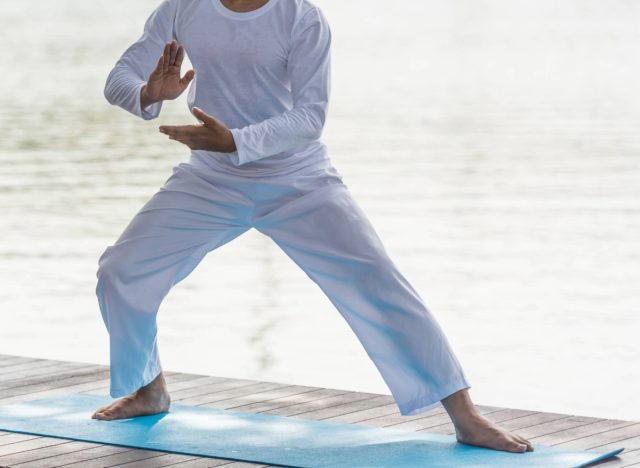It is critical to enhance mobility and balance as you grow older to maintain the ability to participate in your favorite activities and workouts. By adding strength and flexibility training to your daily regimen and focusing on intentional movements, you can enhance your overall well-being, maintain your freedom, and lower the chances of accidents and injuries. We have compiled a list of 10 simple methods to boost your balance and mobility effortlessly.
“Regularly incorporating these activities into your routine can lead to noticeable improvements in your balance and mobility,” explains Alexa Haggard, PT, DPT, lead physical therapist at FYZICAL Therapy & Balance Centers, Mooresville. “Start slowly and gradually increase the intensity and duration as you become more comfortable with the exercises.”
There are several ways to enhance physical function in and out of your fitness routine. Let’s explore 10 easy ways to improve your balance and mobility.
Balance Exercises


You knew this one was coming! Engaging in regular balance exercises can improve posture and coordination and reduce the risk of falls and injury.
- Single-leg Stands: Stand tall and balance on your left foot for 30 seconds, then switch to balancing on your right foot. Feel free to use a chair for support.
- Heel-to-Toe Walk: Walk forward, placing the heel of your walking foot right in front of the toes of your other foot.
Strength Training


Research shows that strength training can boost your range of motion. Whether you strength train with weights or just your body weight, making strength exercises part of your regular routine is essential to staying strong, healthy, and fit.
- Leg Lifts: Stand tall, holding onto a chair. Lift your left leg out to the side, and then repeat with your right leg.
- Squats: Squats strengthen your core and legs. Stand tall with your feet hip-width apart. Bend your knees and press your hips back to lower into a squat until your thighs are parallel to the ground. Press back up.
Flexibility Exercises


- Stretching: Regularly stretch your major muscle groups to preserve and build on your flexibility.
- Yoga: Yoga is another excellent practice that can boost flexibility and balance. Exercises like downward dog, tree pose, and Warrior III can improve muscular strength, body flexibility, and cardiovascular function while reducing stress and anxiety—research says so!
Core Strengthening


Did you know that a strong core can help you achieve better balance and stability? Core-strengthening exercises, like the examples below, are non-negotiables in your fitness routine.
- Planks: Hold a high plan or forearm plank for 30 seconds. Gradually increase the hold time as you progress.
- Bicycle Crunches: Bicycle crunches fire up all of the muscles in your core. Begin lying flat on your back with your legs raised and forming a 90-degree angle. Place your hands behind your head. Crunch to your left as you bring your right elbow to meet your left knee and lengthen your right leg. Repeat on the other side and continue to alternate.
Tai Chi


Tai chi is a soothing exercise practice that’s beneficial for the mind, body, and soul. “This gentle martial art focuses on slow, controlled movements and can significantly improve balance and mobility,” explains Haggard.
Use Balance Boards or Stability Balls


“Incorporate balance boards or stability balls into your workouts to challenge your balance and engage stabilizing muscles,” Haggard recommends. Exercises like stir-the-pot or single-leg stands on a BOSU ball can work wonders for your strength, balance, and mobility.
Functional Movements


Another way to improve your workout regimen and optimize it for balance and mobility is to perform functional movements.
- Sit-to-Stand Exercises: Test out standing up tall from a seated position without utilizing your hands for assistance.
- Step-ups: Use a workout bench or low step to practice step-ups; step onto the surface with one foot, meeting it with the other.
Proprioception Training
“Proprioception” is essentially being aware of your body’s movements. You can improve it through various exercises. Haggard specifically recommends foam pad exercises to engage in proprioception training.
- Foam Pad Exercises: Stand tall on a soft surface or foam pad to put your balance and proprioception to the test. Some examples include single-foot standing, stepping up and down onto the pad, toe standing, squats, and jumps.
Walking


Ah, nothing beats lacing up your sneakers and heading on a brisk walk. The great thing about walking is that if you have access to a treadmill, it’s an easy habit to keep up with no matter what the weather’s doing.
- Regular Walks: Haggard encourages you to walk daily and switch up your terrain and route to keep your balance and fitness challenged.
- Nordic Walking: Another excellent variation of walking to consider is Nordic walking, where you use poles to engage your upper body and improve stability.
Engage in Sports or Activities


Last but not least, think about the physical activities and sports that interest you, as they can help enhance your mobility and balance.
- Dancing: Dancing can be done in a group class or solo at home to improve your coordination and balance. All you really need is a great beat to get grooving!
- Swimming: Water aerobics and swimming offer a stellar low-impact workout to enhance your overall strength and mobility.
Frequently Asked Questions (FAQs)
What is balance and why is it important?
Balance is the ability to maintain your body’s center of mass over its base of support. It is crucial for everyday activities like walking, going up/down stairs, and preventing falls, especially as you age. Good balance helps you stay independent and active.
How can I improve my balance?
1. Practice balance exercises:
Incorporate exercises like standing on one foot, heel-to-toe walk, and balance games into your routine to challenge and improve your balance skills.
2. Strengthen your core:
A strong core provides stability for balance. Include exercises like planks, bridges, and twists in your workouts to strengthen your core muscles.
3. Work on your leg strength:
Strong legs support your body and improve balance. Do exercises like squats, lunges, and calf raises to enhance leg strength.
4. Yoga and Tai Chi:
Practicing yoga or Tai Chi can help improve balance, flexibility, and coordination through specific poses and movements that challenge your stability.
5. Focus on posture:
Good posture aligns your body correctly, reducing the strain on muscles and joints and promoting better balance.
6. Use balance training equipment:
Tools like balance boards, stability balls, and wobble cushions can help improve balance by providing an unstable surface to work on.
7. Stay active:
Regular physical activity like walking, swimming, or dancing not only improves overall fitness but also enhances balance and coordination.
8. Get regular vision check-ups:
Good vision is essential for balance. Ensure you have regular eye check-ups and wear the correct prescription glasses if needed.
9. Improve your proprioception:
Proprioception is your body’s awareness of its position in space. Practice activities that challenge your proprioception, like balancing on uneven surfaces.
10. Consult a professional:
If you have specific balance issues or concerns, seek advice from a physical therapist or a healthcare provider for personalized guidance.






